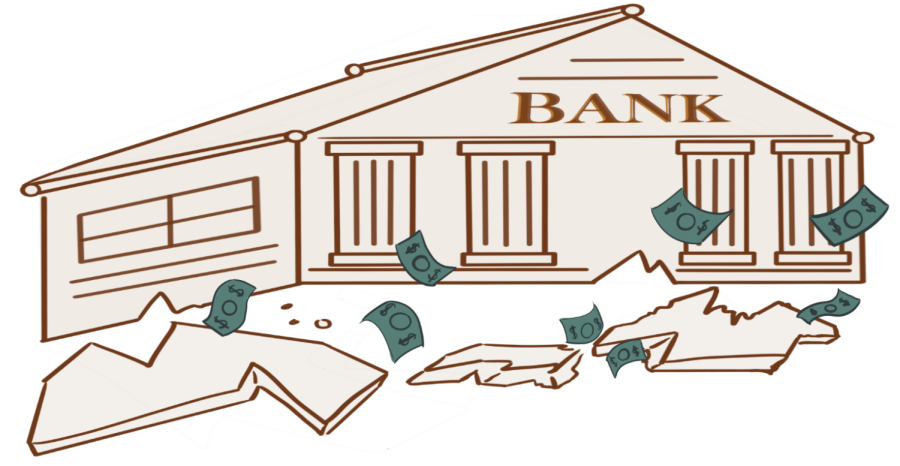Silicon Valley Bank’s collapse signals concern for the economy
April 20, 2023
On March 10th, Silicon Valley Bank (SVB) collapsed, and consumers immediately panicked. Across the country, people raced to pull money out of banks, fearing the loss of life savings. The last time the United States saw such a large-scale drop in confidence was in 2008, sparking the following recession. A potential repeat would be devastating on the world scale.
Unfortunately, SVB’s problems aren’t a fluke.They’re widespread, and they have a name: bonds. Bonds are an investment in governments as opposed to traditional companies. The government would have to collapse for bonds to be void, so they’re a safe investment, which is what attracts banks to them. That’s because banks take consumers’ savings and invest it, accruing interest. Bonds are an easy bet because banks can always get their money back. SVB uses this system, and when they didn’t have enough cash on hand for customers, they sold their bonds for money to repay their depositors.
With rising interest rates, older U.S. bonds are no longer as lucrative as they once were. In fact, SVB sold their bonds at a loss. Since the bank’s collapse, the Biden administration has bailed SVB’s customers out, and public confidence has rebounded. Still, the impacts are not limited to SVB: bonds are in every single bank’s investment portfolio, making them a cause for concern to some.
The economy is balancing on a tightrope; it must keep consumer confidence while also getting rid of the banks’ bad bonds. The banks are fine for now, but if others are forced to sell their low-interest bonds, another SVB scare is inevitable. The next time, a simple bail out may not suffice.
This piece was originally published in Zephyrus’ print edition on April 20.



